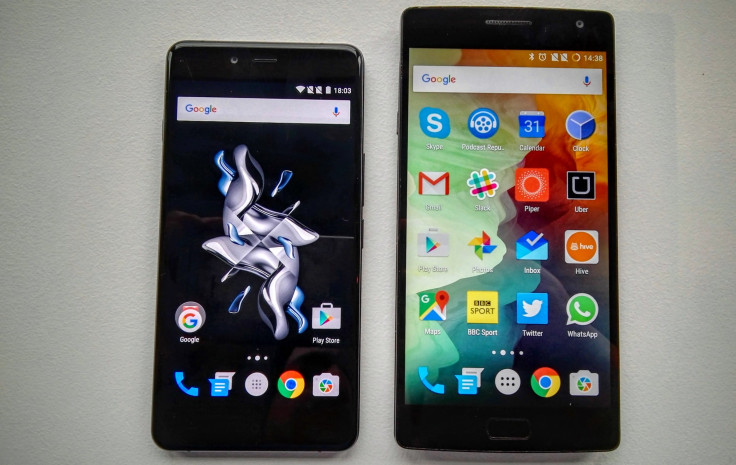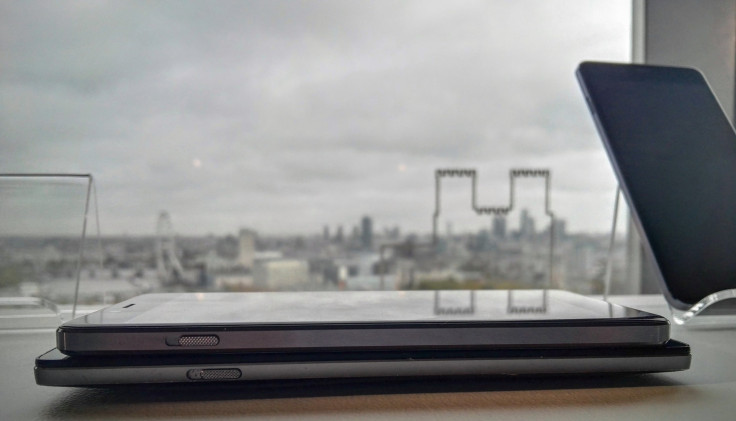OnePlus X vs OnePlus 2: Specs, Screen, Price, Design - Which Should You Buy?

LONDON -- OnePlus is an up-and-coming Chinese smartphone manufacturer and with the release of its latest smartphone now has two of the most compelling Android smartphones on the market which blend hardware, design and specs with budget-friendly prices -- so which should you buy?
The OnePlus 2, which is the company's second ever phone, was launched in August with the tagline "2016 flagship killer" while the OnePlus X was launched this week and will go on sale from next week and promises design excellence in a compact frame with an even lower price than its bigger brother.
Here we will break down the pros and cons of each looking at screen size and resolution, processing power, features, design, camera and of course price, it help you decide which smartphone you should buy.
Design
Aside from price, design is where the biggest and most obvious difference is between these two phones. The OnePlus 2 is by no means a monster, but it is a big phone and lacks the refinement you get with the lines on the iPhone and Galaxy S range of phones. It is industrial with sharp edges and an odd sandstone rear cover than means it won't appeal to those looking for a phone to easily slide into their pocket or handbag.

That phone is the OnePlus X. This phone is all about clean lines and a lack of fussiness, making it appealing to those looking for something simple yet well-designed. The OnePlus X comes in two versions. The Onyx model is finished in black glass with a metal frame featuring micro grooves for better handling, while the ceramic version (which is substantially more expensive) comes with a ceramic rear cover -- though the difference is not instantly obvious.
The OnePlus X is a sleek (6.9mm) and lightweight (138g) phone when compared to the OnePlus 2 (9.85mm; 175g) or indeed pretty much any smartphone on the market.
Screen
Both the OnePlus 2 and OnePlus X feature screens with 1920 x 1080 pixel resolution, which by today's standards is hardly cutting edge. The OnePlus 2 offers a larger 5.5-inch screen giving it a pixel density of 400 pixels per inch (ppi), while the OnePlus X features a more compact 5-inch screen giving it a sharped pixel density of 441ppi.
The other difference here is the screen technology used. The OnePlus 2 used an IPS LCD panel while the OnePlus X used AMOLED technology. IPS LCD is the more widely-used technology (it is used in the iPhone) and offers a more natural color reproduction while AMOLED tends to over-saturate colors.
AMOLED screens however can take advantage of local dimming, meaning individual pixels can be turned on or off which has two benefits. The first is blacker blacks and the second means it can help battery life. The OnePlus X takes advantage of this through its Ambient Display features which shows notifications on the lock screen in monochrome, theoretically saving battery life -- something the OnePlus 2 cannot do.

The final thing to think about in screen size is how easy it is to use one-handed. The OnePlus 2's 5.5-inch screen is pretty cumbersome to use with a single hand, while the OnePlus X is easy to use one-handed.
Processor, Storage And Battery Life
On paper the OnePlus 2 should win the processor battle hands down. It uses the Snapdragon 810 chip which is paired with up to 4GB of RAM while the OnePlus X uses the decidedly dated Snapdragon 801 chip which was first released over 18 months ago. But that's not the whole story.
The Snapdragon 810 chip has caused numerous problems, most noticeably in the Xperia Z3+ which was virtually unusable due to overheating. OnePlus says it has tweaked the processor to address these problems and in testing appears to have done a good job. Similarly, the company says the 801 chip may be old be is still more powerful and capable than the current mid-range Snapdragon chips on offer, and with 3GB of RAM any performance issues should be ironed out. However doubts remain whether the OnePlus X could handle intensive tasks like 3D gaming all that well.
One the storage side, the OnePlus X may offer a single 16GB model, but it has a microSD card slot which doubles as a second SIM card tray if needed -- allowing you expand the memory by up to an extra 128GB. The OnePlus 2 comes in 16GB and 64GB models, but crucially it doesn't have a microSD card slot, so you're stuck with whatever storage you get first day.

The OnePlus 2 does also feature a fingerprint reader on the home button for unlocking the phone, something the OnePlus X lacks. The OnePlus 2 also uses the newer USB-C connector for faster charging and data transfers while the OnePlus X uses the more conventional microUSB port.
In terms of battery life, the OnePlus X, due to its sleek lines and compact shape, has a measly 2525mAh battery and while OnePlus says this will last you a day, that could be a struggle considering you have the same resolution screen and less efficient processor as the OnePlus 2 which has a more capacious 3300mAh battery.
Camera
Both of the 2015 OnePlus smartphones feature 13 megapixel sensors on the main rear camera. There are some significant differences here however.
The OnePlus 2 also offers optical image stabilization (OIS), 4K video recording (30fps), as well as fast-forward and slow-motion video capture. The OnePlus X lacks OIS and 4K video (you get Full HD) as well as the fast-forward feature though you do get slow-mo. However the OnePlus X does promise faster auto-focus using the company's phase detection system which promises to focus within 0.2 seconds.
Neither camera is going to challenge the best on the market such as the Galaxy S6 or the iPhone 6S, but both should provide decent images though low-light perfromacne is the biggest challenge here.
Oxygen OS
Both phones come with the latest version of Oxygen OS, the company's proprietary skin of Android and as skin's go this is pretty light and adds some genuinely useful features.
One of the best features of OxygenOS is the ability to launch applications simply by drawing symbols on the screen - even when its locked and turned off. Draw a circle and the camera will launch. Draw a V and the torch is switched on. Draw an arrow and you can skip forward to the next music track. The only problem is that you cannot customize the symbols - but that could be something OnePlus will include in a future software update.
Invite Only

Both phones are only available though OnePlus's innovative and highly frustrating invite system. The company said it had fixed issues with the system for the OnePlus 2 launch, but this has not been the case with people still struggling to get their hands on one. The same system -- where invites are sent in waves to those who register an interest online or pick one up through social media channels and competitions -- is being used for the OnePlus X, but the company says it has already manufactured lots of the devices ready to send out, and with a single model on offer (aside from the limited edition ceramic model), it should be a smoother process.
The company has also said it will begin holding open sales from December where you don't need an invite, which will become more regular in the following months.
Price
This is pretty straightforward. As long as you are not looking to get your hands on the ceramic model (and there are only 10,000 of those available anyway and not to customers in the U.S.), the OnePlus X will cost $249. The OnePlus 2 in comparison will cost you $329 for the 16GB model and $389 for the 64GB model.
© Copyright IBTimes 2024. All rights reserved.












